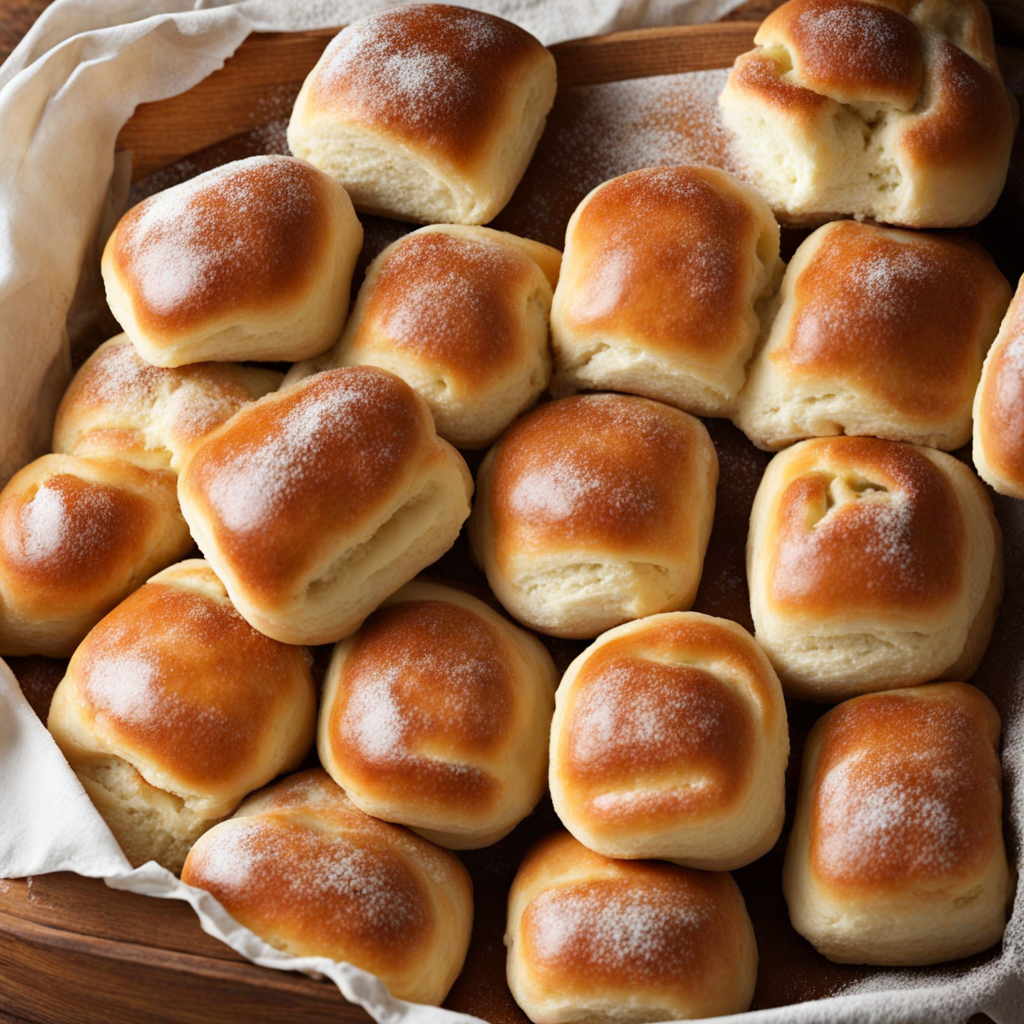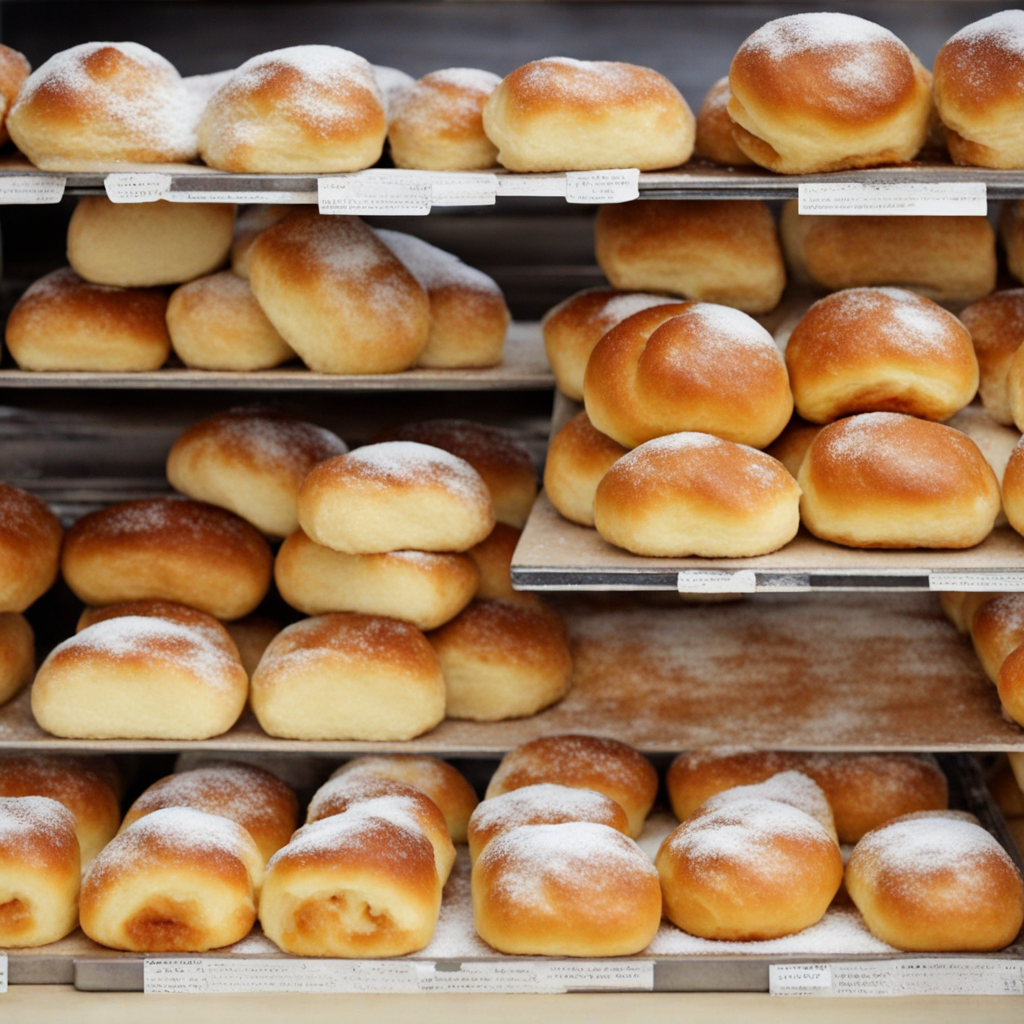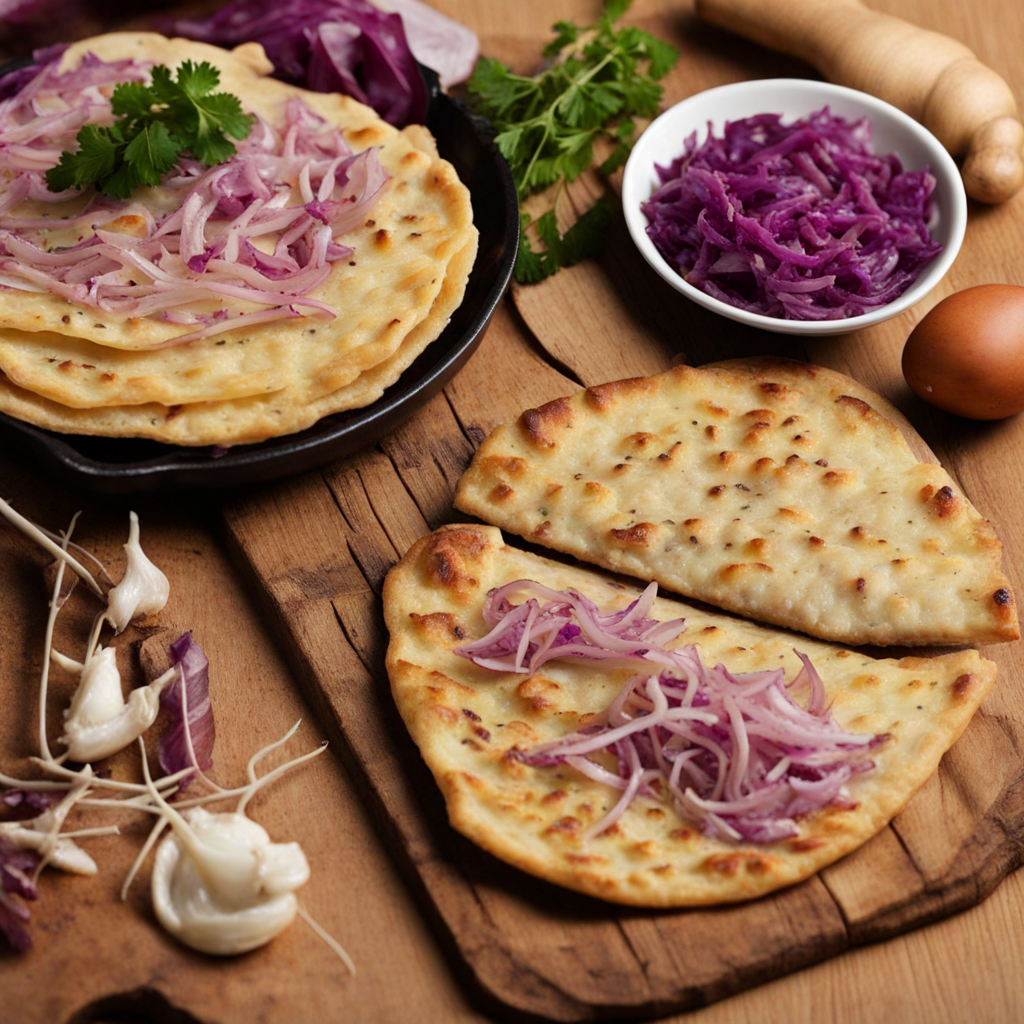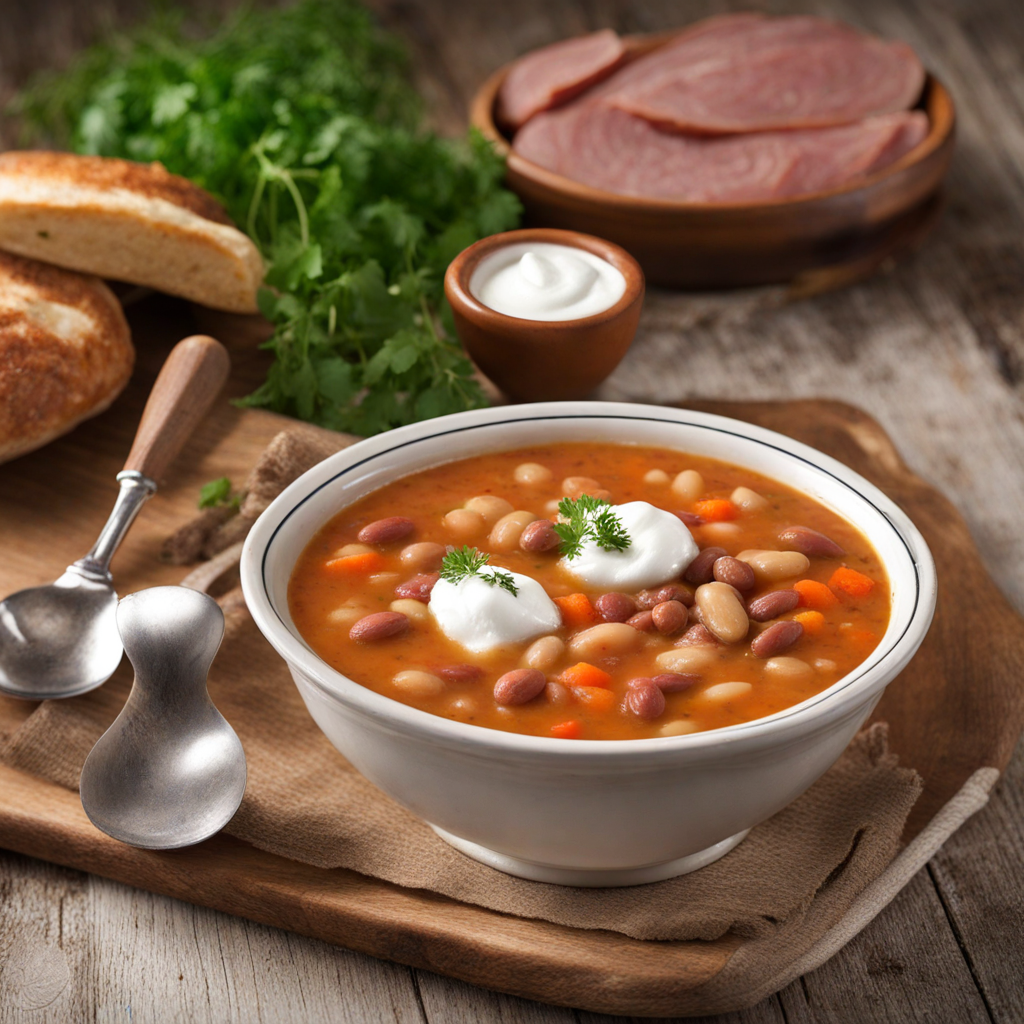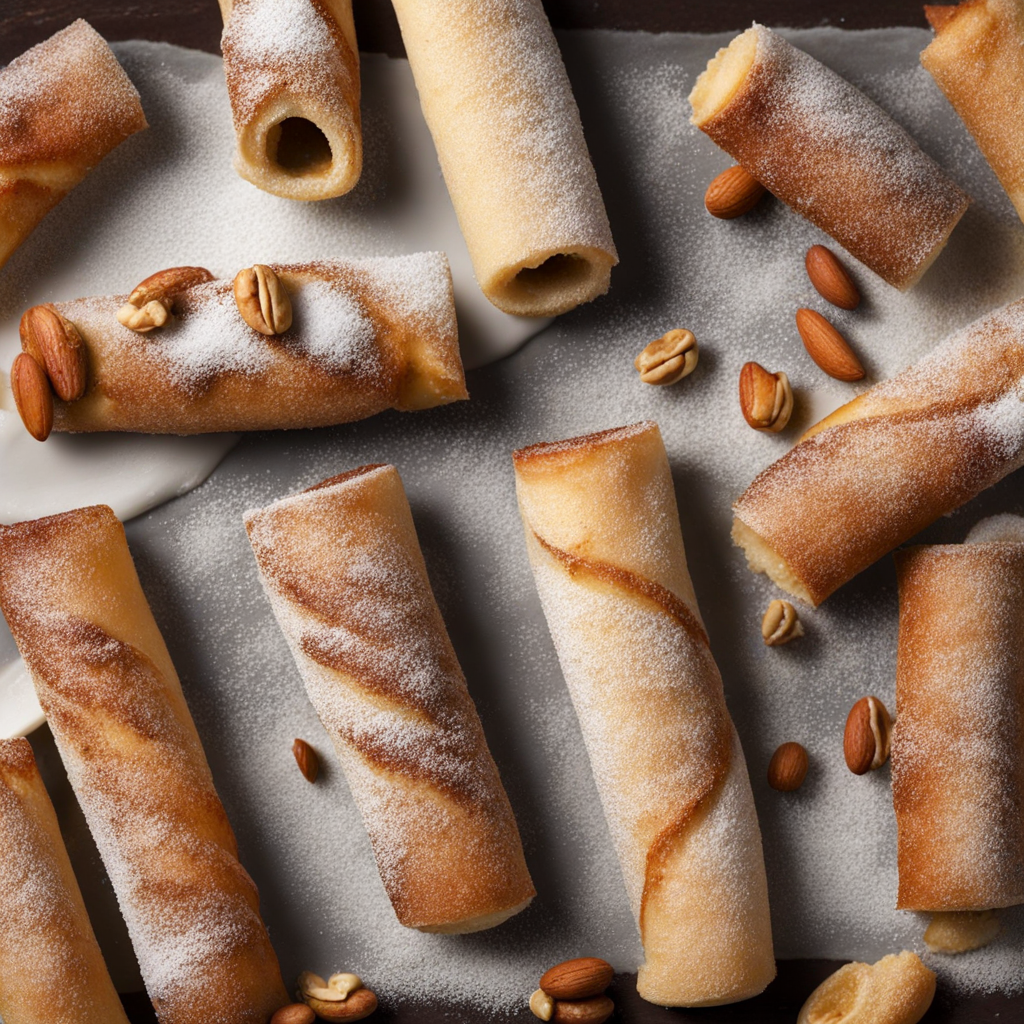Buchty
Buchty are delightful Slovakian sweet yeast dumplings that embody comfort and tradition in every bite. These pillowy treats are typically made from a rich dough that includes flour, eggs, milk, sugar, and yeast, resulting in a soft and fluffy texture. The dough is often left to rise, which enhances its lightness, making Buchty incredibly satisfying. Once the dough has been prepared, it is cut into small pieces that are filled with various sweet fillings, commonly fruit preserves like plum, apricot, or poppy seeds, and then shaped into small balls before being baked to golden perfection. When you take a bite of Buchty, you are met with a warm, tender exterior that gives way to a gooey, sweet center. The contrast between the soft, yeasty dough and the luscious filling creates a delightful experience for the palate. Often served dusted with powdered sugar or drizzled with melted butter, Buchty can be enjoyed as a dessert or a sweet breakfast treat. Their versatility allows them to be paired with sour cream or yogurt for added richness, enhancing the overall flavor profile. Beyond their taste, Buchty also hold a special place in Slovakian culture, often being prepared for family gatherings, holidays, and festive occasions. Each household may have its own variation, making them a cherished recipe passed down through generations. Exploring the world of Buchty not only introduces you to a delicious new flavor but also invites you into the heart of Slovakian culinary heritage.
How It Became This Dish
The Sweet History of Buchty: Slovakia's Beloved Buns #### Origins and Early History Buchty, a delightful treat originating from Slovakia, are sweet, yeast-leavened buns that can be filled with various fillings, most commonly fruit preserves, poppy seeds, or sweet cheese. The word "buchta" translates to "bun" in English, and while its precise origins are somewhat murky, there is a consensus that the dish has deep roots in Central European culinary traditions. The evolution of Buchty can be traced back to the influence of various cultures, including Austro-Hungarian, German, and Slavic traditions. In the medieval period, yeast-based dough began to gain popularity across Europe. The method of using wild yeast to leaven bread was common, and this technique eventually led to the creation of sweetened variations. As trade routes expanded and agricultural practices improved, ingredients like sugar and butter became more accessible, enabling bakers to experiment with richer doughs. #### Cultural Significance In Slovak culture, Buchty are more than just a dessert; they are a symbol of communal life and tradition. Often made for family gatherings, holidays, and celebrations, these buns carry with them a sense of nostalgia and warmth. Each family may have its unique recipe, passed down through generations, which contributes to the cultural fabric of Slovak cuisine. Buchty are particularly popular during festive occasions. For instance, they often make an appearance during Easter, when families gather to celebrate the season of rebirth and renewal. Traditionally, these buns are enjoyed with a sweet filling that embodies the joy of these occasions. In some regions, they are even served with a sprinkle of powdered sugar or drizzled with icing, adding to their festive appeal. #### Variations and Regional Differences As the tradition of making Buchty spread throughout Slovakia and neighboring countries, regional variations emerged. Each locality has its twist on the classic recipe. In some areas, Buchty are filled with fruit preserves, such as apricot or plum, while in others, poppy seeds or sweetened cheese are the preferred fillings. This variation is reflective of local agricultural practices and the availability of ingredients. In the eastern regions of Slovakia, Buchty might be made with a lighter, fluffier dough, often enriched with eggs and butter, giving them a rich, decadent quality. In contrast, in the western regions, you might find a denser dough that holds its shape better. Moreover, in Slovakia's multicultural cities, like Košice and Prešov, the influence of Hungarian and Polish cuisines is evident in the way Buchty are prepared and served, showcasing the adaptability of this beloved dish. #### Development Over Time The 19th century marked a pivotal moment in the history of Buchty. As Slovak nationalism began to rise, so did interest in traditional foods and recipes. Intellectuals and writers began to document Slovak culinary practices, emphasizing the importance of preserving heritage through food. This movement led to a resurgence in popularity for traditional dishes, including Buchty, which were celebrated as symbols of Slovak identity. During the 20th century, particularly after World War II, the culinary landscape of Slovakia began to change due to industrialization and urbanization. Traditional methods of baking were often replaced by mass-produced alternatives. However, in the face of modernization, there was a counter-movement that sought to revive traditional baking practices, leading to a renewed appreciation for homemade Buchty. Slovak homemakers and bakers began to share their cherished recipes online, further cementing the role of Buchty in contemporary Slovak culture. #### Buchty in Modern Slovak Cuisine Today, Buchty continue to hold a cherished place in Slovak cuisine. They are featured in bakeries throughout the country and are often found at local markets and festivals. The revival of interest in artisanal baking has led many young Slovaks to embrace traditional recipes, experimenting with new fillings and presentation styles while respecting the classic techniques. With globalization, Slovak Buchty have also found their way onto international menus, often celebrated in Central European restaurants around the world. Chefs have started to reinterpret Buchty, incorporating local ingredients and flavors, which has introduced this iconic dish to a new audience. While the essence of Buchty remains rooted in Slovak tradition, the adaptability of the recipe allows for innovation and creativity. #### Conclusion Buchty are a testament to the rich culinary heritage of Slovakia, embodying the warmth of family gatherings, the joy of celebrations, and the spirit of community. This beloved bun, with its sweet fillings and soft, pillowy texture, has evolved over centuries, reflecting the changing landscape of Slovak culture and cuisine. As we move further into the 21st century, Buchty will undoubtedly continue to adapt, but their role as a symbol of Slovak identity and tradition will remain steadfast. Whether enjoyed at a festive gathering or savored as a comforting treat, Buchty remind us of the importance of food in connecting us to our roots and to each other. In every bite, one can taste the history, the love, and the enduring spirit of Slovakia.
You may like
Discover local flavors from Slovakia


